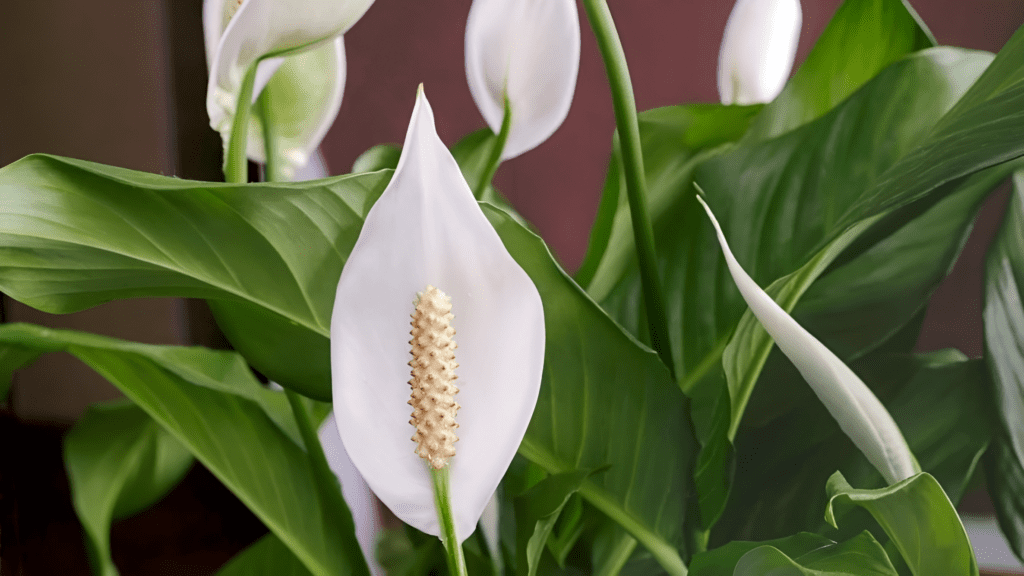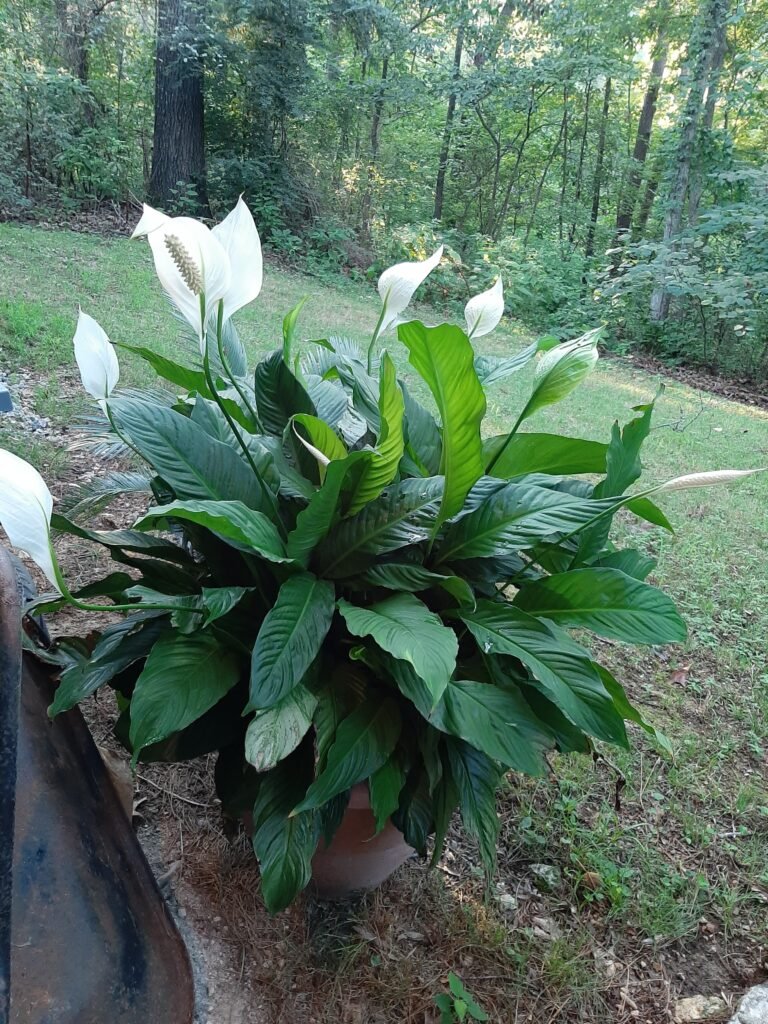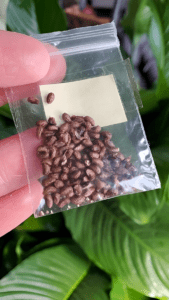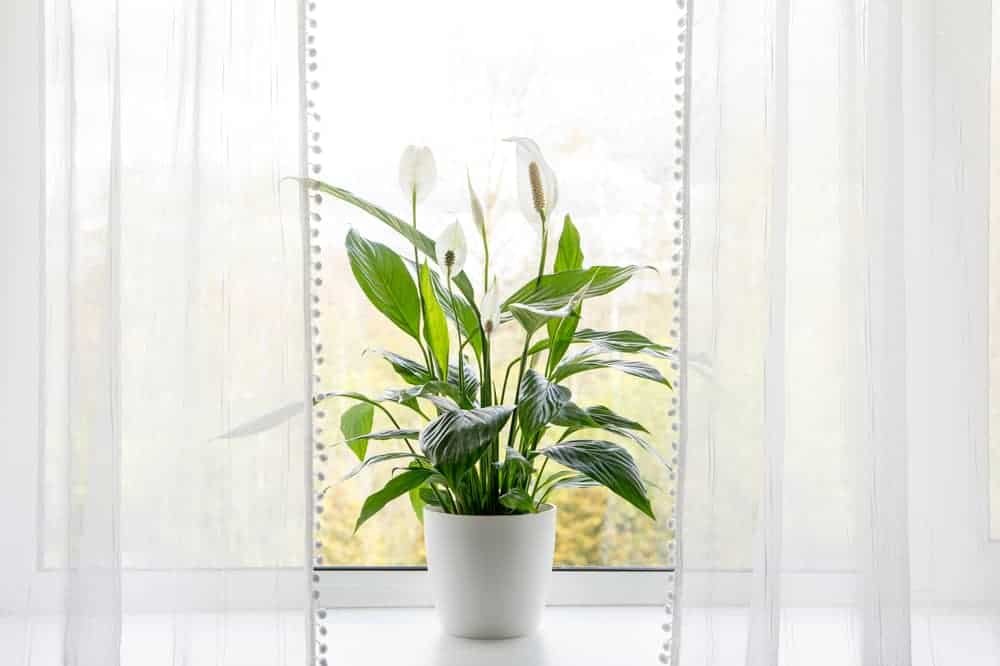Peace lily: definition, how to plant it, diseases, care for it
Introduction to peace lily
Peace lilies can be recognized by their green leaves and white-covered flowers. The white-caped flowers of the peace lily, raised high above the leaves like little white flags, have been likened…
Peace lilies are toxic to pets and small children, so it may be best to keep them away from them.
- Peace lilies contribute to creating a more comfortable indoor environment by naturally regulating humidity levels...they release moisture into the air through transpiration, counteracting the dry conditions common in heated or air-conditioned spaces.
- Peace lilies help improve air quality by trapping and digesting harmful airborne particles such as benzene and ammonia.

Basic care guide
Spathiphyllum wallisii is a small peace lily, reaching only 12 inches tall.
“Petite” is smaller, measuring about 8-10 inches long.
“Sensation” is the largest variety available, capable of growing up to 4-6 feet in height and width.
'Domino' is a medium-sized species with attractively variegated leaves.
'Mojo Lime', which has lime green foliage, is medium in size
Original home south america
Nickname
White sails
Platoon
Arum

The amount of water needed
Soil dryness is important. Keep the soil slightly moist to the touch but not overly saturated. Peace lilies can tolerate short periods of dry soil, but their leaves will begin to develop brown tips if they do not have enough water or moisture.
Tip: One of the nice things about peace lilies is that they'll let you know when they're thirsty: the plant's leaves begin to droop. When the plant starts to look less “vibrant” than usual, test the soil with your finger. If it feels dry, it's time to water again.
Peace lilies are sensitive to chemicals commonly found in tap water, such as fluoride, which may cause brown leaf tips. Use filtered, room temperature water, if possible
Suitable living conditions
In warm and humid climates
Temperatures
Temperature ranges between 16 and 21 degrees Celsius. Keep your plant away from cold drafts, otherwise it may wilt
Suitable lighting for him:
East-facing windows are ideal for peace lilies because they provide moderate light without burning their leaves. If this is difficult in your home, simply find a place in indirect light, away from the hot sun
- No flowers appear, this means that the plant is not getting enough light. Peace lilies are very tolerant of low light, but “low light” does not mean no light! To encourage flowering, move the plant to a brighter location, where it will receive bright, indirect light for at least a few hours each day.
- Peace lilies prefer slightly acidic soil with a pH level between 5.5 and 6.5.
- It is important to ensure that the pot you choose has sufficient drainage holes to allow excess water to drain.
- You need a light, sandy potting soil that will drain well, and you also want soil with a slightly acidic pH. In addition, you will need potting soil that is high in organic matter so that it can retain moisture without waterlogging.
- One simple method is to mix equal parts topsoil, peat moss and perlite. This mixture will provide a good foundation for most peace lilies


Find out what light your plants are actually getting.
Find the best locations for them to improve their health, simply using your phone.
Fertilization care
– Fertilize peace lilies with an evenly balanced fertilizer – such as 10-10-10 NPK – or a fertilizer with a slightly higher nitrogen content.
-Fertilizers should always be applied to moist soil in order for nutrients to be absorbed quickly.
-For outdoor growth, use slow-release fertilizers in early spring and again in early summer.
-Water lightly after applying liquid fertilizer to ensure distribution throughout the soil to all roots.
-Avoid over-fertilizing, which often appears as brown tips or yellow or drooping leaves
How to plant seeds
Peace lilies contain seeds in seed pods that can be harvested
Peace lily seeds are slow to germinate and require ideal conditions, such as a warm, humid environment.
Plant them carefully in individual pots with well-drained soil.
Care: Provide your seedlings with proper light (bright, indirect light is best for peace lilies), keep the soil consistently moist (but not saturated), and maintain a warm, humid environment.
Pruning
Peace lilies produce their flowers on stems that grow from the base of the plant. Once a stem has made one flower, it will not produce more, and after the flower wilts, the stem will eventually turn brown and die as well. Peace lily pruning should be done at the base of the plant. Cut the stem as close to the bottom as possible. This will make room for new stems to emerge.
-If any of your leaves turn discolored or dry out, simply cut off the offending leaves at their base. .
- Yellow leaves are caused by overwatering, underwatering, or aging (of the leaf). If the old leaves turn yellow and the plant hasn't been potted in a while, it may just need more space to expand its roots.
- Mealybugs (thoroughly wiping the leaves using a soap and water solution or insecticide is effective in stopping them)
- Fallen or wilted leaves are often the result of too much water.
If it is a houseplant, what are the best conditions for it to be cared for in a home?
- It is recommended to fertilize the plant every 6 weeks in late winter.
- The plant's moisture must be constantly maintained by spraying its leaves with water and placing a pot of water and pebbles around it.
- It is recommended to wash the leaves with a damp cloth and not use an artificial product for this. They can also be washed once a year.
- It is recommended to add organic mulch such as straw around the plant to prevent fungal infection.
- It is recommended to use healthy, room temperature water when watering the plant; Because it is sensitive to chemicals.

Suggested use
- Ideal for small spaces such as apartments, offices, or any area where space is limited.
- Peace lilies are also an ideal gift plant
- Air Purifier, Natural Air Freshener, Excellent at regulating humidity, Reduces mold spores in the air, Great for enhancing mental health, Improves sleep quality
Suitable planting time
February and March
additional information
- Plant age
Peace lilies live anywhere between three to five years
Plant height
Most indoor varieties of peace lily grow up to 16 inches tall, but larger outdoor varieties can have leaves up to 6 feet long.
Flowering stage
Peace lilies have a moderate growth rate and typically take three to five years to fully develop after planting seeds. It usually takes more than two years to reach maturity



